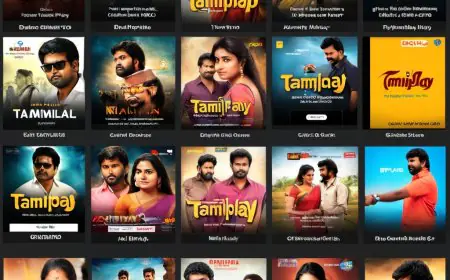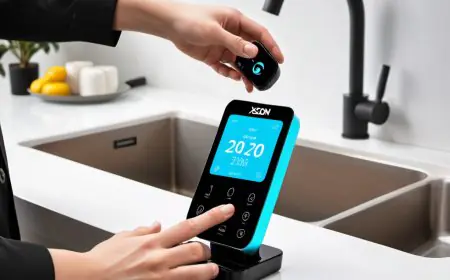Cost-Effective Strategies for Grocery Mobile App Development in 2024

In the rapidly growing digital landscape, grocery app development has become an essential investment for businesses aiming to cater to the evolving needs of consumers. With the increasing demand for online grocery shopping, companies are seeking cost-effective strategies to develop high-quality mobile applications. However, balancing affordability with functionality can be challenging. This blog explores practical approaches to minimizing mobile app development cost while maintaining performance, user experience, and scalability.
Understanding the Market Trends in Grocery App Development
Before diving into the cost-effective strategies, it is crucial to understand the latest trends shaping grocery app development in 2024. Some of the prominent trends include:
-
AI-Driven Personalization: AI integration helps create personalized shopping experiences based on user preferences and behavior.
-
Voice Search & AI Chatbots: Enhanced user convenience with voice-activated searches and AI-powered customer support.
-
Subscription-Based Models: Offering premium memberships for exclusive deals and faster deliveries.
-
Blockchain for Secure Transactions: Ensuring transparency and security in payments and supply chain tracking.
-
Sustainability Features: Eco-friendly grocery options and reduced carbon footprint through optimized delivery routes.
-
Augmented Reality (AR) for Shopping: Providing immersive experiences, such as virtual aisle browsing.
Understanding these trends can guide developers in making cost-conscious choices while incorporating essential features into grocery apps.
Cost-Effective Strategies for Grocery App Development
1. Define Clear Objectives and Features
Before starting development, it is crucial to define the core objectives of the grocery app. Identify the must-have features versus the nice-to-have ones. Essential features may include:
-
User registration & authentication
-
Product catalog & search functionality
-
Shopping cart & checkout
-
Multiple payment options
-
Order tracking
-
Push notifications
By focusing on essential functionalities first and rolling out additional features in phases, businesses can significantly reduce initial mobile app development cost.
2. Choose the Right Development Approach
There are multiple development approaches, each with different cost implications:
-
Native App Development (Separate apps for iOS and Android) ensures the best performance but can be expensive.
-
Cross-Platform Development (Using frameworks like Flutter or React Native) reduces costs by allowing a single codebase for both platforms.
-
Progressive Web Apps (PWAs) offer an affordable solution by functioning like an app but being accessible via browsers.
For businesses with budget constraints, opting for cross-platform development or PWAs can be a more cost-effective solution.
3. Leverage Pre-Built Solutions and APIs
Instead of building everything from scratch, businesses can integrate third-party APIs and SDKs for functionalities like:
-
Payment gateways (Stripe, PayPal, Razorpay)
-
Maps & geolocation (Google Maps API)
-
Push notifications (Firebase Cloud Messaging)
-
AI chatbots (Dialogflow, ChatGPT APIs)
Utilizing existing solutions helps reduce development time and cost significantly.
4. Outsource to Cost-Effective Development Teams
Hiring an in-house development team can be expensive due to salaries, benefits, and infrastructure costs. Instead, businesses can:
-
Outsource to offshore development firms in regions with lower labor costs (e.g., India, Eastern Europe).
-
Hire freelancers for specific tasks such as UI/UX design, backend development, and quality assurance.
By outsourcing strategically, businesses can save up to 50% of mobile app development cost compared to hiring locally.
5. Adopt an MVP (Minimum Viable Product) Approach
Building a Minimum Viable Product (MVP) allows businesses to launch a basic version of the app with core functionalities and collect user feedback before investing in advanced features. This strategy helps:
-
Validate the market demand
-
Identify necessary improvements
-
Reduce upfront development costs
MVPs can be iteratively improved based on user insights, ensuring efficient budget utilization.
6. Use Open-Source Technologies
Leveraging open-source frameworks and technologies can significantly cut down on development expenses. Some cost-effective options include:
-
Backend: Node.js, Django, Laravel
-
Frontend: React Native, Flutter, Angular
-
Database: PostgreSQL, Firebase, MongoDB
-
Cloud Hosting: AWS Free Tier, Google Cloud, Firebase
Using these technologies minimizes licensing costs and speeds up development.
7. Optimize UI/UX for Cost Efficiency
A well-designed UI/UX enhances user engagement but can also be developed within a budget. Strategies for cost-effective UI/UX design include:
-
Using pre-made UI kits and templates
-
Focusing on simple, intuitive navigation
-
Prioritizing mobile-first design
Avoiding overly complex designs and animations reduces development costs while maintaining a user-friendly experience.
8. Implement Cost-Effective Testing Strategies
Testing is essential to ensure app quality, but excessive manual testing can be costly. Businesses can reduce testing expenses by:
-
Using automated testing tools (Appium, Selenium)
-
Conducting beta testing with real users instead of hiring dedicated testers
-
Utilizing cloud-based testing platforms for cross-device compatibility checks
A well-planned testing strategy minimizes post-launch bug fixes, thereby reducing long-term costs.
9. Leverage Cloud Services for Scalability
Instead of investing in expensive infrastructure, businesses can use cloud-based solutions for hosting and storage. Popular options include:
-
AWS Lambda (Pay-as-you-go model)
-
Firebase Backend-as-a-Service (BaaS)
-
Google Cloud Functions
Cloud computing allows businesses to scale operations efficiently without heavy upfront investments.
10. Invest in Marketing Automation
Marketing is crucial for app success, but traditional methods can be costly. Budget-friendly marketing strategies include:
-
Social media promotions (Instagram, Facebook, LinkedIn)
-
Influencer partnerships with micro-influencers
-
SEO optimization for organic reach
-
Referral programs for user acquisition
Using marketing automation tools like HubSpot, Mailchimp, or Hootsuite can further optimize ad spend and enhance user engagement at a lower cost.
Final Thoughts
Grocery app development in 2024 requires a strategic approach to balance functionality and cost. By defining clear objectives, leveraging open-source tools, outsourcing smartly, and using an MVP approach, businesses can significantly reduce mobile app development cost while ensuring a high-quality product. With the right cost-effective strategies, businesses can build scalable and user-friendly grocery apps that drive long-term success in the competitive market.
By implementing these techniques, companies can not only cut expenses but also create a sustainable and profitable grocery app that meets customer expectations. As technology continues to evolve, staying updated with market trends and adopting innovative yet affordable solutions will be the key to success in grocery mobile app development.
What's Your Reaction?



































































